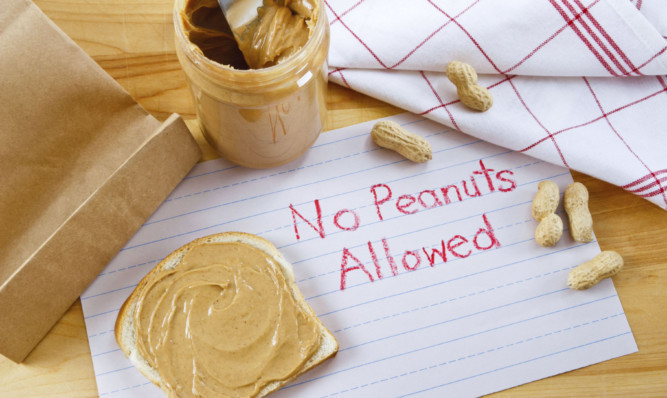A new study has revealed that peanut allergy may be caused by exposure to peanut protein in household dust.
Around two per cent of schoolchildren in the UK are allergic to peanuts while severe eczema in early infancy has also been linked to food allergies, particularly peanut allergy.
Now researchers at King’s College London, in collaboration with the universities of Dundee and Manchester has discovered the FLG gene, which codes the skin barrier protein filaggrin. Mutations in this gene can cause deficiencies in the skin barrier with allows allergens to penetrate the skin and sensitise the body,
They hope the discovery will ultimately help prevent the development of peanut allergy in children who are genetically susceptible to the condition.
The study, published in the Journal of Allergy and Clinical Immunology, found a strong link between children with FLG deficiencies who are exposed to peanut protein in household in the first year of their life and their likelihood of developing a peanut allergy later in life.
Researchers looked at the amount of peanut protein children were exposed to in household dust in their first year of life by vacuuming dust from the living room sofa and measuring peanut using a peanut protein antibody assay.
A group of 577 children were then assessed at eight and 11 years of age for peanut allergy and their DNA was checked for mutations in the gene encoding filaggrin.
It discovered a three-fold increase in house dust peanut exposure during infancy was associated with a three-fold increase in risk of peanut allergy. One in five children with peanut allergy had a FLG mutation. There was no significant effect of environmental peanut exposure in children without FLG mutations.
Dr Helen A Brough, first author from the Department of Paediatric Allergy, King’s College London, said: “Our findings provide evidence that peanut allergy may develop via the skin in children with mutations in the gene that codes for filaggrin that damage the function of this important skin protein.
“These findings are also an example of how an individual’s response to their environment can be modified by their genes. Our study raises the possibility of being able to identify a group of children with FLG mutations through genetic testing in the future, and altering their environmental exposure to peanut early in life to reduce the risk of developing peanut allergy.”
Over the past two years the King’s team has been investigating the level of peanut protein in household dust, how this correlates with household peanut consumption, and how peanut protein in dust can trigger an immune response in the cells of children who are allergic to peanut.
Peanut protein is present on hands and in saliva for up to three hours after peanuts or peanut-based food has been eaten, and can persist on table surfaces and sofa or pillow dust even after routine cleaning.
Professor Irwin McLean and Dr Sara Brown from the University of Dundee collaborated on the study with the King’s and Manchester researchers.
